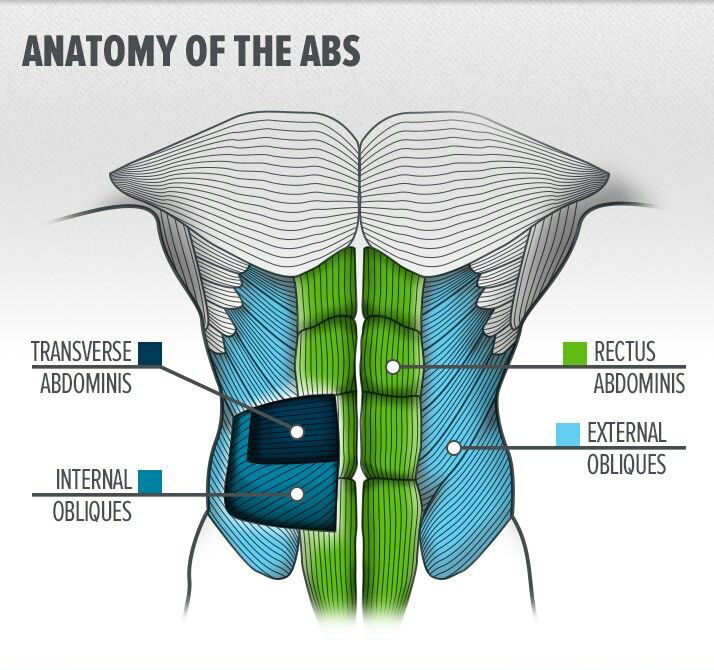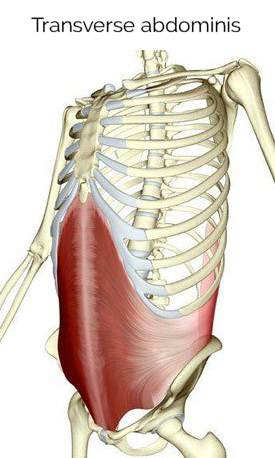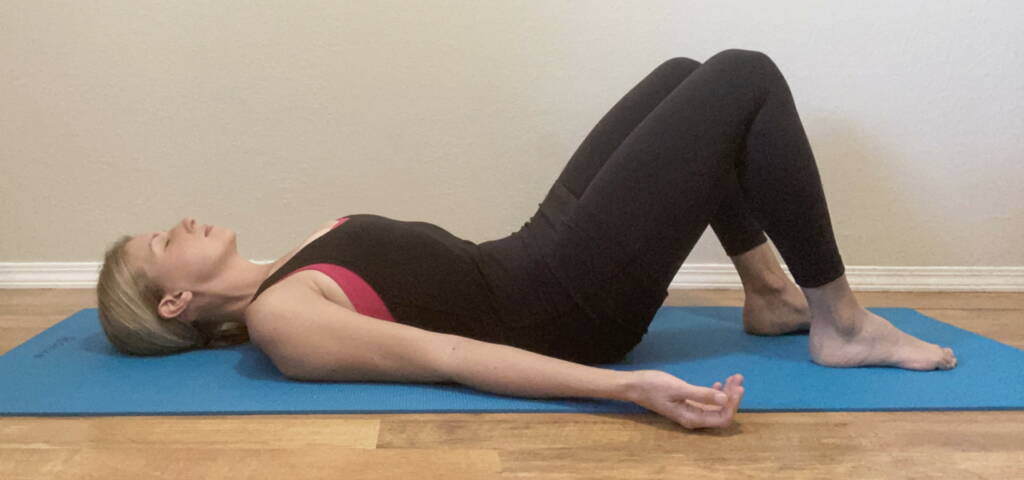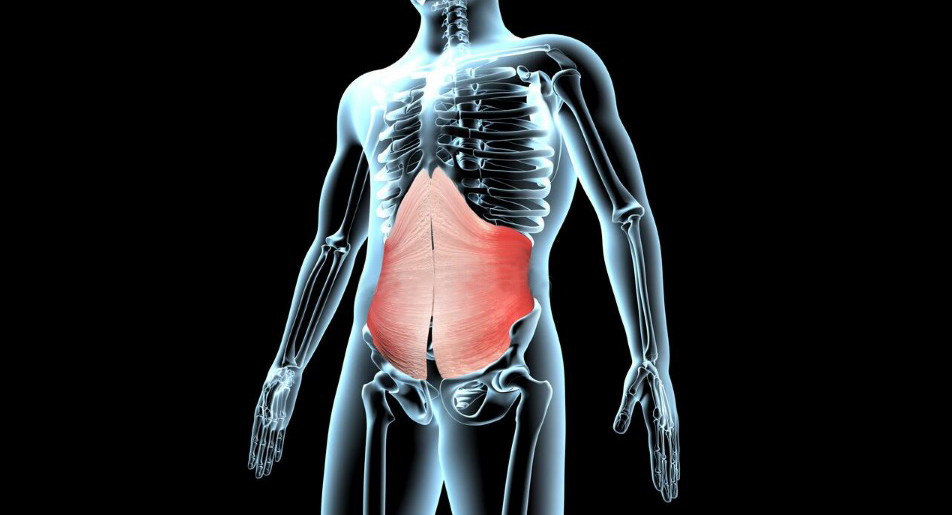Improve Core Stability by Activating Your Transverse Abdominis
You’re likely familiar with your rectus abdominis muscle: this is the muscle that forms a “six-pack” when it’s highly developed. You may also be familiar with your internal and external obliques, the muscles on each side of your torso that bend and twist you from side to side. But what about the transverse abdominis, your deepest abdominal muscle?
I spent much of my life not being aware of this muscle or of its importance. When I finally began working with this muscle—consciously activating it, improving my voluntary control of it, and building its strength—I developed a whole new level of core stability that I had previously only dreamt of!


What does the transverse abdominis do?
The sole action of the transverse abdominis is to compress the abdomen. This is why I instruct you to hollow out your belly when you do a Flatten: so you can start gaining voluntary control of your transverse abdominis.
Along with the other abdominal muscles, the transverse abdominis supports the torso and stabilizes the spine and pelvis during movement. It is very important to have voluntary control of your abdominal muscles—in other words, to be able to engage them when needed—in order to avoid overusing your back muscles for stability and support. When we overuse our back muscles and don’t engage our abdominals during movement, we develop chronic muscle tension and pain in the lower back.
The transverse abdominis also helps to protect the internal organs by holding them in place. Weakness in this muscle can increase the risk for abdominal hernias. The transverse abdominis plays a major role in facilitating contractions and pushing during childbirth, and it is involved in expulsive functions including forced exhalation, urinating, and having bowel movements.
It’s important to note that the internal and external obliques also help to compress the abdominal contents. However, working with your obliques by doing exercises that bend and twist your torso do not necessarily improve your ability to compress your abdomen. You need to consciously practice hollowing out your belly in order to activate and strengthen your transverse abdominis.
Don’t overdo it!
The transverse abdominis is known as the “corset muscle.” Once you’ve started activating your transverse abdominis, it can help hold your stomach in.
BUT—like any muscle, there’s a difference between holding it tight all the time and having voluntary control of it. Ideally, with all muscles, what we want is voluntary control. We want to be able to engage muscles when we need them to perform a task, then release them when we’re done.
If you keep your transverse abdominis contracted all the time, it can affect your ability to take a full inhale and allow your belly to expand. You need to be able to relax your abdominal muscles in order to let your lower belly expand forward as you inhale.
How to start activating and strengthening your transverse abdominis
A few important tips:
1. Do abdominal exercises on an empty stomach! You’ll find it much easier to fully engage your muscles, so the exercises will be more effective—and much more comfortable to do!
2. You’ll find it easier to engage your transverse abdominis (and all of your abdominals) when your lower back muscles and iliopsoas are released. So if you have a tight lower back, be sure to practice the Arch & Flatten, Back Lift, and Iliopsoas Release regularly.
3. I recommend approaching all strengthening exercises using the principles outlined in the book Deep Fitness.
To start activating and improving voluntary control of your transverse abdominis:
1. Supine Stomach Vacuum: Lie on your back on the floor with your knees bent and feet on the floor, a comfortable hip width distance apart. Inhale and let your lower belly expand, relaxing your abdominal muscles as you inhale. Then exhale, and as you exhale, hollow out your belly (draw your belly button down toward the floor). Hold for 5-10 seconds, making sure to breathe normally as you keep your stomach hollowed out. Then slowly release. Repeat as desired.

2. Seated, Standing, Kneeling, and Prone Stomach Vacuum: You can practice this same hollowing-out exercise in other positions, as described and shown in this article on Fitness Volt.
3. Abdominal Crunches: Beginning any abdominal strengthening exercise by first exhaling and hollowing out the stomach will result in strengthening the transverse abdominis. When doing crunches, first exhale and hollow out your belly, then lift your head and shoulders off the floor. Once you lift your head and shoulders up, your rectus abdominis will engage, and your stomach will not look hollowed out anymore—that’s okay! Continue to engage your transverse abdominis as you hold your crunch for 5-10 seconds, then slowly lower down. Repeat as desired.

4. Plank: Start in a standard push-up position, except with your elbows and forearms on the floor. If you’re just starting to build strength in your abdominals, keep your knees on the floor in a modified plank position. Keep your body in a perfectly straight line from your head down to your heels (or knees, in modified plank). Exhale, hollow out your belly and engage your entire core. Hold this position for as long as you can, remembering to breathe normally while keeping your abdominals engaged.

Recommended reading:
The Pain Relief Secret: How to Retrain Your Nervous System, Heal Your Body, and Overcome Chronic Pain by Sarah Warren, CSE
Somatics: Reawakening the Mind’s Control of Movement, Flexibility and Health by Thomas Hanna

